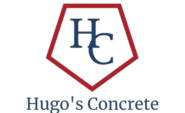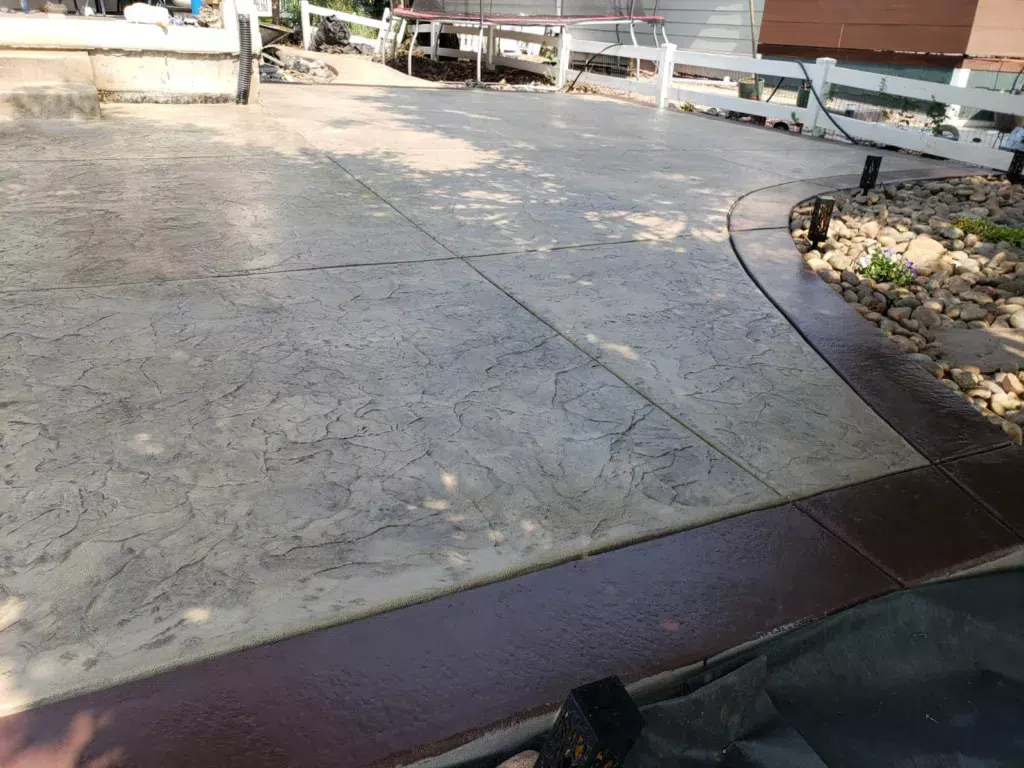The benefits of stamped concrete are multifaceted. Firstly, it provides an economical alternative to natural materials while offering the versatility to mimic various textures and patterns. Its durability makes it suitable for high-traffic areas, and the extensive range of available colors and designs allows for customization to suit different aesthetic preferences.
Stamped concrete requires minimal maintenance compared to traditional materials, and its seamless surface minimizes weed growth and tripping hazards. The application of a protective sealer enhances its resistance to stains, UV rays, and general wear and tear, contributing to a longer lifespan. Additionally, stamped concrete offers a quick installation process compared to laying individual pavers or stones. Overall, the combination of aesthetic appeal, durability, and low maintenance makes stamped concrete a popular choice for enhancing outdoor spaces.
Here’s a general overview of the stamped concrete process including the preparation, application, and finishing stages that contribute to the creation of durable and aesthetically pleasing surfaces that mimic the appearance of natural materials like stone, brick, or wood.
Concrete Pouring:
The concrete pouring process starts by pouring a concrete slab, essential for creating a strong foundation. This involves pouring freshly mixed concrete into prepared forms shaped to the desired dimensions. Whether it’s for new construction or an overlay on an existing surface, proper mixing and quick, precise pouring ensure even spreading and filling of voids. This step is vital for the durability and strength of the structure.
Coloring:
Coloring involves adding integral color to the concrete mix for a consistent base hue. Additional color can be achieved using color hardeners or stains. These methods enhance the surface’s appearance and durability, providing rich, lasting colors that mimic natural materials like stone or wood. Proper coloring techniques ensure a visually appealing finish.
Stamping:
Stamping is done while the concrete is still unset, using mats made of polyurethane or rubber to imprint patterns and textures. Proper alignment and pressure are crucial for a uniform, realistic appearance. This technique allows for the look of high-end materials at a fraction of the cost, making it a popular choice for decorative concrete surfaces.
Detailing:
Detailing involves adding fine textures and details with hand tools after stamping. This step enhances the realism of the stamped patterns, making them look more natural. Attention to detail during this stage ensures a high-quality, aesthetically pleasing finish that stands out.
Release Agent Application:
A release agent is applied to the concrete and stamps to prevent sticking and add color variation. This agent, in powder or liquid form, ensures clean removal of the stamps and contributes to the final appearance by creating subtle, natural-looking variations in color.
Curing:
Curing is the process of allowing the concrete to harden and achieve its full strength. This typically takes several days and involves maintaining adequate moisture and temperature. Proper curing prevents cracking and ensures the concrete’s durability and longevity.
Cleaning and Sealing:
After curing, the concrete is cleaned to remove any residual release agent. A protective sealer is then applied, enhancing the color, protecting against stains, and improving durability. Regular maintenance, including resealing, keeps the concrete looking fresh and extends its lifespan.
Hugo’s Concrete has helped hundreds of satisfied customers in Northern Colorado with their stamped concrete projects. Our commitment to quality and customer satisfaction has earned us a strong reputation in the community. Whether you need a new patio, walkway, or driveway, our expert team is ready to transform your space with beautiful, durable stamped concrete. Give us a call today to schedule a consultation, where we can discuss your project in detail and provide you with a personalized plan to bring your vision to life. Don’t wait—contact us now to start enhancing your property with our top-notch concrete services!
4o

